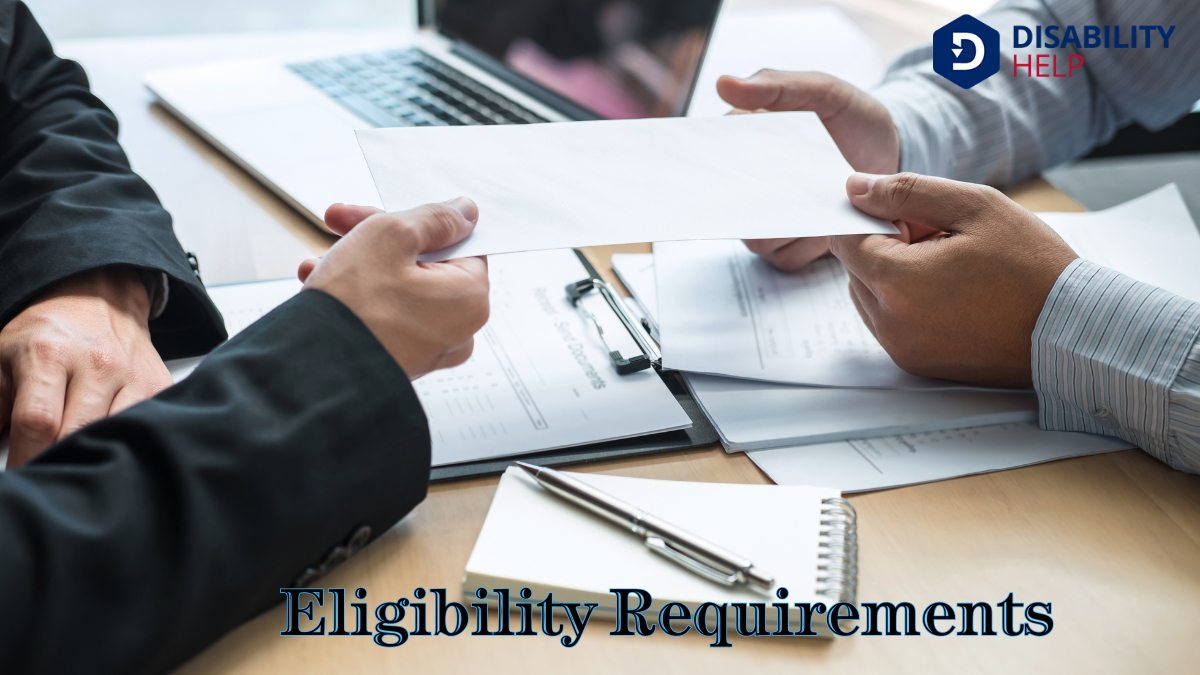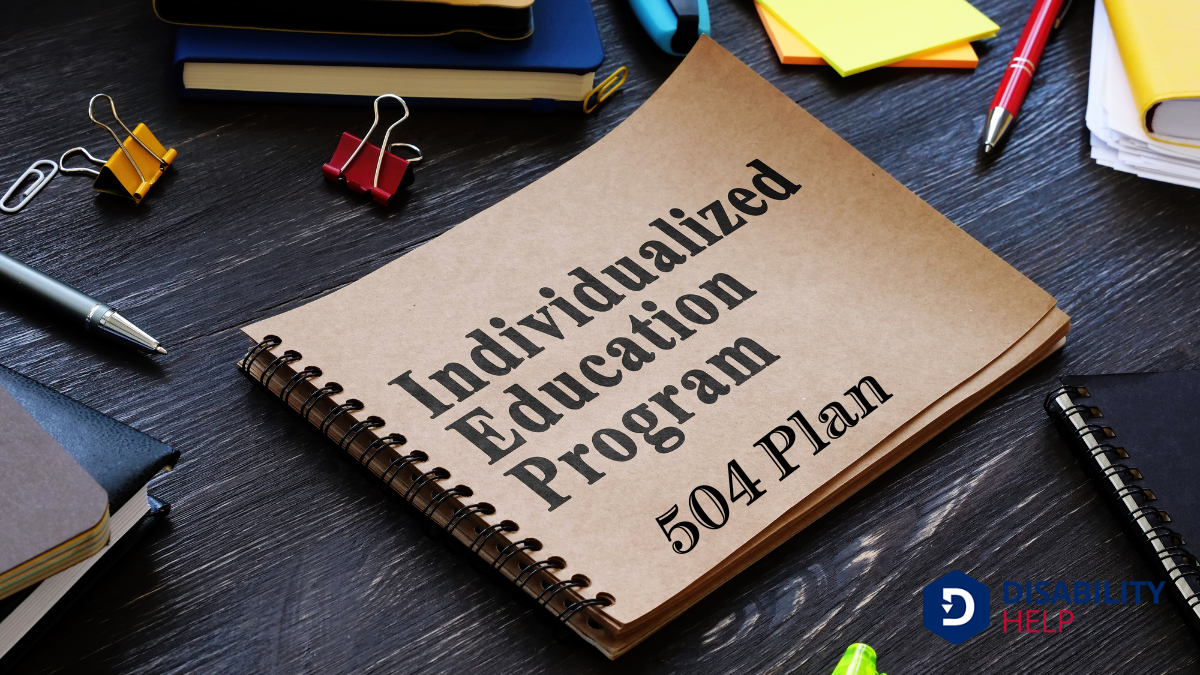An IEP and a 504 Plan both support students with disabilities, but there's a key difference. IEPs, under IDEA, focus on providing specialized instruction and services for students with specific disabilities affecting learning. Meanwhile, 504 Plans, governed by Section 504A provision of the Rehabilitation Act of 1973 that prohibits discrimination based on disability in p... of the RehabilitationThe process of helping individuals with disabilities achieve and maintain their optimal physical, se... Act, guarantee students with disabilities have equal accessThe principle that all individuals, including those with disabilities, should have equal opportunity... to accommodationsModifications or adjustments in healthcare settings to support patients with disabilities. that don't change the curriculum. With us, you'll uncover more about how they work in schools.
Key Takeaways
- IEPs provide specialized instruction under IDEA, while 504 Plans offer accommodations under the Rehabilitation Act of 1973A U.S. law that prohibits discrimination based on disability in federal programs and services, inclu....
- IEPs require a specific disability impacting educational performance; 504 Plans cover broader disabilities affecting major life activities.
- IEPs involve formal assessments like psychological evaluations, whereas 504 Plans use less formal assessments such as teacher reports.
- IEPs include tailored goals and services; 504 Plans focus on accommodations without modifying the curriculum.
- Both involve collaboration among parents, teachers, and school staff, but IEPs are more formal and individualized.
Understanding the Legal Frameworks
When we explore the legal frameworks underpinning IEPs and 504 Plans, it's crucial to understand the distinct laws governing each. The Individuals with Disabilities Education Act (IDEA) guides IEPs, guaranteeing students with disabilities receive tailored educational services. Under IDEA, we focus on providing specialized instruction and related services.
In contrast, 504 Plans fall under the Rehabilitation Act of 1973, specifically Section 504, which prohibits discrimination based on disability. This law guarantees students equal access to educational opportunities by providing accommodations and modifications.
We must recognize that while both frameworks aim to support students with disabilities, they serve different purposes and requirements. By understanding these legal distinctions, we can better advocate for students, guaranteeing they receive the support they deserve in their educational journey.
Eligibility Requirements

Determining eligibility for IEPs and 504 Plans involves distinct criteria that reflect their unique purposes.
When we look at IEPs, they fall under the Individuals with Disabilities Education Act (IDEA). To qualify, a student must have one of the specified disabilities that adversely affects their educational performance, requiring specialized instruction.
In contrast, 504 Plans, governed by the Rehabilitation Act of 1973, have broader eligibility. They support students with any disability that considerably impacts major life activities, guaranteeing equal access to education without necessarily needing specialized instruction.
In essence, IEPs cater to those who need tailored educational approaches, while 504 Plans provide modifications to guarantee equal access.
Understanding these differences helps us navigate educational support structures more effectively. Let's make sure every student gets the support they need.
Evaluation and Assessment Process
Let's explore how the evaluation and assessment processes differ between IEPs and 504 plans.
We'll look at the distinct eligibility criteria each one requires and the specific assessment tools utilized.
Eligibility Criteria Differences
Understanding the eligibility criteria for IEPs and 504 plans is crucial in guaranteeing students receive the appropriate support.
For an Individualized Education Program (IEP)A plan developed for U.S. students with disabilities to ensure they receive tailored educational ser..., a student must have one or more of the 13 specific disabilities recognized by the Individuals with Disabilities Education Act (IDEA). These disabilities must affect the child's educational performance, necessitating specialized instruction.
In contrast, a 504 plan, governed by Section 504 of the Rehabilitation Act, accommodates students with a broader range of physical or mental impairments. These impairments must substantially limit one or more major life activities, including learning.
The key difference is that IEPs focus on specialized instruction and related services, while 504 plans provide accommodations to guarantee equal access to education without altering the curriculum.
Assessment Tools Utilized
When evaluating students for an IEP or a 504 plan, we rely on a variety of assessment tools to accurately determine their needs. These tools help us tailor educational strategies to each student's unique challenges.
For an IEP, we often use formal assessments like psychological evaluations, academic testing, and observations. These provide in-depth insights into a student's learning disabilities and cognitive abilities.
A 504 plan, however, typically involves less formal assessments, focusing on understanding the student's specific needs without extensive testing. We might review medical records, teacher reports, and parent input.
Components of an IEP
An Individualized Education Program (IEP) is a thorough document designed to address the unique educational needs of a student with a disability, ensuring they receive appropriate support in the school setting.
Let's explore its components to understand its framework. First, it includes present levels of academic achievement and functional performance, which provide a baseline for measuring progress.
Next, it outlines measurable annual goals tailored to the student's needs, allowing us to track their growth effectively.
The IEP specifies special education servicesEducational programs and services designed to meet the needs of students with disabilities., including accommodations and modifications, essential for the student's success.
Additionally, it details the extent of the child's participation in general education settings.
Finally, it includes assessments to monitor progress and inform any necessary adjustments.
Together, these components create a supportive educational pathway.
Features of a 504 Plan

While an IEP provides a structured plan for students requiring specialized instruction, a 504 Plan offers accommodations for students with disabilities to secure equal access to education.
Let's explore the key features of a 504 Plan together. This plan focuses on removing barriers in the learning environment, allowing students to participate fully alongside their peers. It doesn't alter the curriculum but provides necessary support like extended time on tests, seating arrangements, or assistive technology.
A 504 Plan is less formal than an IEP, yet it's equally important. It involves collaboration among teachers, parents, and school staff to tailor support for each student's unique needs.
Unlike an IEP, it doesn't require a written document, but it must be implemented effectively to guarantee students thrive academically.
Differences in Accommodations and Modifications
When comparing IEPs and 504 plans, let's focus on how they shape accommodations and modifications.
We must consider individualized support strategies, classroom environment adjustments, and changes in assessment methods.
Understanding these differences helps us better support each student's unique needs.
Individualized Support Strategies
Understanding the differences in accommodations and modifications between an IEP and a 504 plan can seem intimidating, but let's break it down.
An IEP, or Individualized Education Program, offers tailored modifications and services to meet a student's unique learning needs. It often includes specialized instruction, like one-on-one tutoring or speech therapy, and adjusts educational goals.
In contrast, a 504 plan provides accommodations, not modifications, ensuring students have equal access to education. It might include extended test time, seating arrangements, or breaks, but it doesn't alter the educational content or goals.
Our focus is to support each student's success by understanding these distinctions. By leveraging the right plan, we empower students to thrive in their learning environments without altering core expectations.
Classroom Environment Adjustments
To effectively support students with diverse needs, we must recognize the distinct ways classroom environment adjustments are implemented through IEPs and 504 plans. Both plans aim to create a supportive learning environment, but they differ in scope and application.
- Accommodations: IEPs often include specific accommodations such as preferential seating, extended time on tasks, or the use of assistive technology. These are tailored to the student's unique needs.
- Modifications: In contrast, IEPs can also incorporate modifications that alter what a student is expected to learn, like simplified assignments, which aren't typical in 504 plans.
- 504 Plan Flexibility: 504 plans focus more on ensuring access to the learning environment, often involving minor adjustments like allowing breaks or reducing distractions without altering the curriculum.
Understanding these differences helps us provide effective support.
Assessment Method Changes
Shifting our focus from classroom environment adjustments, let's explore how assessment method changes differ between IEPs and 504 plans.
In an IEP, we can implement both accommodations and modifications. Accommodations might include extended time on tests or alternative test formats, guaranteeing students demonstrate their knowledge effectively. Modifications, however, change the content or expectations, such as simplifying test questions to tailor the assessment to the student's unique learning needs.
With a 504 plan, we focus solely on accommodations. These adjustments, like providing a quiet testing room or allowing the use of a calculator, support the student in meeting the standard expectations without altering the test's content or criteria.
Understanding these distinctions helps us better support students' diverse learning needs and guarantee equitable assessment.
Parental and School Responsibilities
While traversing the world of special educationCustomized educational programs designed to meet the needs of students with disabilities., both parents and schools have distinct responsibilities when it comes to managing an Individualized Education Program (IEP) or a 504 Plan.
We, as parents, must guarantee our child's needs are clearly communicated. Schools, on the other hand, are tasked with executing these plans effectively.
Let's break down our roles:
- Parents' Role: We advocate for our child by attending meetings, providing necessary documentation, and maintaining open communication with educators.
- School's Role: Schools must develop and implement the plan, allocate resources, and guarantee compliance with legal requirements.
- Collaborative Effort: Both parties must work together, exchanging feedback and information to adaptA grassroots disability rights organization in the U.S. that focuses on promoting community-based se... the plan to the child's evolving needs.
Together, we create a supportive environment for our child's success.
Monitoring and Reviewing Progress

With our roles clearly defined, it's time we focus on how we can assure the effectiveness of our child's IEP or 504 Plan through ongoing monitoring and reviewing progress.
Regular check-ins with teachers and support staff help us understand if the plan is meeting our child's needs. We should review progress reports and assessments to see if goals are being met. If they aren't, it's important to communicate with the school to adjust strategies.
Attending IEP or 504 meetings lets us stay informed and voice any concerns. By actively participating, we ensure the plan remains tailored to our child's requirements.
Let's collaborate with educators, remaining proactive and flexible to support our child's educational journey effectively.
Transition Planning for Adolescents
As we focus on change planning for adolescents, let's consider how we can best prepare them for life after school.
It's essential that we help students develop self-advocacyThe act of representing oneself and one’s interests, particularly by individuals with disabilities... skills, empowering them to understand their needs and communicate effectively.
Together, we'll explore strategies that support their journey toward independence and success.
Preparing for Life After School
Steering the change from school to adulthood can feel overwhelming, but with the right planning, it becomes a pathway to success. Transition planningThe process of preparing students with disabilities for life after high school, including post-secon... is essential for students with IEPs or 504 plans.
Together, we need to focus on setting goals that align with their strengths and interests. Here's how we can prepare effectively:
- Identify Post-School Goals: Let's discuss career aspirations, further education, or independent living.
- Develop Practical Skills: Encourage gaining work experience, financial literacy, and daily living skills.
- Connect with Resources: Explore community programs, vocational training, or college support services.
Developing Self-Advocacy Skills
Even though the journey to adulthood presents challenges, developing self-advocacy skills empowers adolescents to take control of their future. By learning to communicate their needs and rights effectively, they can navigate life with confidence.
We must encourage them to understand their support plans, whether it's an IEP or a 504, and involve them in meetings. This involvement helps them recognize their strengths and areas for growth.
Practicing self-advocacy isn't just about speaking up; it's about asking questions and seeking help when needed. We can guide them in setting goals, understanding their accommodations, and knowing who to contact for support.
Navigating Dispute Resolution Procedures
Maneuvering dispute resolution procedures for IEPs and 504 plans can be challenging, but understanding the key steps can help us advocate effectively for our children's needs.
When disagreements arise, we should stay informed and organized. Here's a simple breakdown to guide us:
- Review the Plan: Carefully examine the IEP or 504 plan. Identify specific areas of concern and gather supporting documents.
- Communicate Clearly: Schedule a meeting with school officials to discuss the issues. Clearly express our concerns and be open to listening to their perspective.
- Seek Mediation: If conflicts remain unresolved, requesting mediation can be a productive next step. A neutral third party can help facilitate a fair agreement.
Conclusion
In wrapping up, we've explored the key distinctions between IEPs and 504 plans. Both serve to support students with disabilities, but they cater to different needs and legal criteria. It's essential for us, as advocates for our children's education, to understand these differences and collaborate with schools to guarantee the right plan is in place. Let's stay proactive in monitoring progress and be prepared to navigate any disputes that may arise. Together, we can foster a supportive learning environment.






